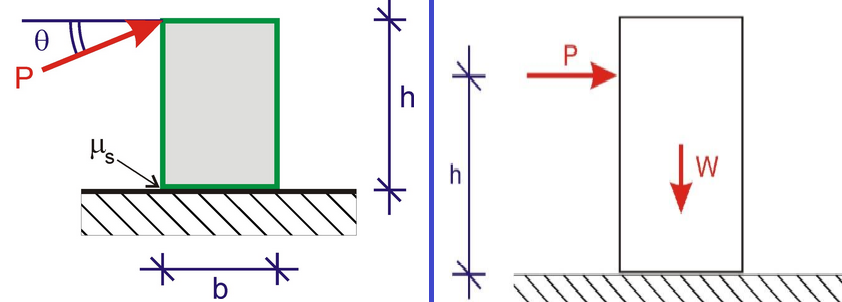We have a big problem-solving poster on the MLC wall that gives students advice for solving problems. One of those pieces of advice is that to decide what to do for your current problem, you could look at other problems for inspiration. Yesterday I saw the dangerous results of what happens if you look at other problems for instructions rather than inspiration.
Across the day I talked to several students about Statics, which is an engineering physics course concerning situations where objects are not moving (ie “static”). At least three of them had put their answers into the computer-marking system and found that they were wrong, and so they wanted help to figure out why. As always, I asked them to tell me more about the problem and how they solved it.
The students showed me the problem they were trying to solve, and then pulled out their lecture notes and showed me how they found a problem that was similar and followed the same procedure. Normally, this would make me extremely happy — students actually looking at their actual lecture notes independently? Bliss! But unfortunately, what they had done was notice how the example had the same letters in it as their problem and put the values of those letters from their problem in the formulas they saw in the example.
The big problem was that the forces in the book’s examples were perfectly horizontal, but the ones in their assignment were at an angle, so they couldn’t just put things in the formula. Oh dear.
These students had interpreted the example as a list of instructions for precisely what to do if they saw a similar picture with similar letters in it. They had interpreted the process of solving Statics problems as finding the right formula and putting things in the right places. Instead, Statics problems are more about making your own formula from the structure of the problem situation itself. When you read a Statics example, you are looking for inspiration for how to think about the problem, rather than for instructions for how to do it.
I am very glad now that when we chose the words for our poster, we used the word “inspiration”. In the future I will try to highlight that aspect of it a bit more, so that students can be looking for the right things when they perform the good practice of looking for examples in the notes.


Great post/observation David,
I’ve come across the same thing in class – “.. are you trying to reuse the equations on pg44 of my notes? Did you draw a free body diagram of this particular problem?”.
Next step: the reflection “what can I do better next year to avoid/reduce this misconception?” (answers on a postcard please …). Thanks for the help in identifying this “recipe trap” I’ve inadvertently introduced.
Terry